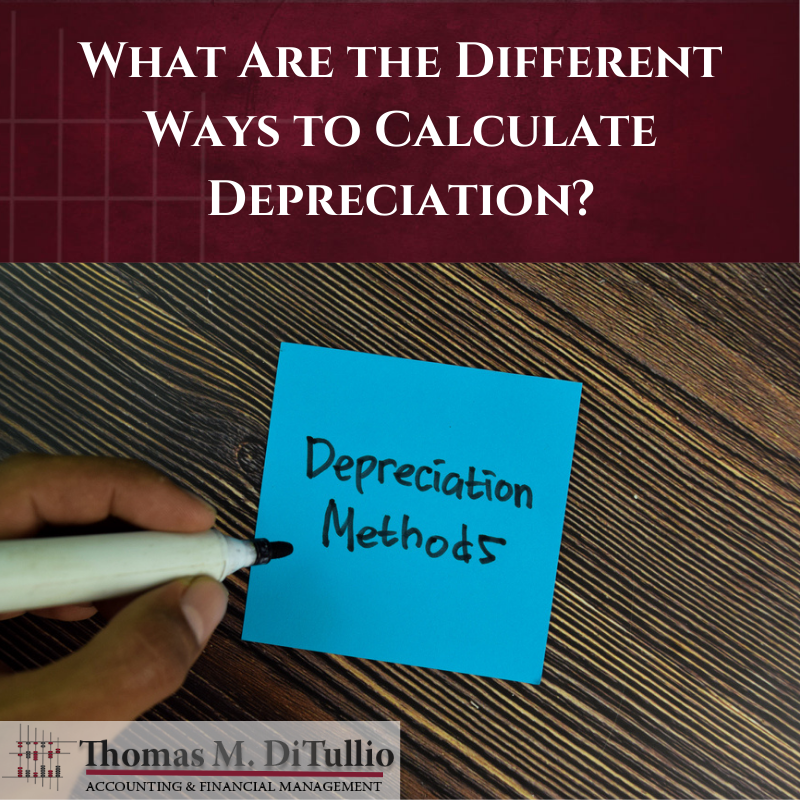What Are the Different Ways to Calculate Depreciation?
Over the useful life of an asset, there will be some depreciation in its value. Due to wear and tear, the asset value of an item will decrease. There are many ways to determine the depreciation value of an asset. Some of these depreciation values are only applicable to specific industries. With these depreciation methods, you want to make sure to choose the one that offers the best economic benefits for your company. Here are a few tips that you need to know about calculating the depreciation value of your assets.
Five Types of Depreciation
Before you can calculate depreciation, you should know about the various types. There are five types of depreciation, including:
- Units of productions
- Straight-line
- Sum of the years’ digits
- Declining balance
- Double-declining balance
Let’s look at how to determine these values.
Units of Production Depreciation Method
This depreciation method uses the expected number of units produced as the basis for your calculation. With units of production depreciation, the more units made, the more depreciation expenses can be charged. The depreciation expenses are calculated using the total number of units produced in a certain period of time compared to the expected number of units that the asset will produce over its useful life. You can use that rate to multiply with the asset net cost. Make sure to use the following formula:
Depreciation expense = unit production rate / units produced x cost + residual value
Between all of the depreciation methods, the units of production depreciation model are the most difficult to determine because the company must decide how many units the asset can produce over a specific period. For example, if your company purchased a machine for $40,000 and was expected to produce 1,000 units over its lifespan, it has a residual value of $2,000.
Straight-Line Depreciation Method
Straight-line depreciation is a little easier to determine for your business. This method spreads the costs of assets evenly over the asset’s useful life. The depreciation expenses are fixed for every year. With that, the depreciation expenses are the same from the first year to the end of its lifespan. Straight-line depreciation is the most common depreciation method used by companies and accountants. You can determine straight-line depreciation by using this formula:
Depreciation expenses = fixed asset cost – residual value / useful life
For example, a company bought a delivery truck for $45,000 and planned to use it for five years. When the company is ready to sell after the period, they list it for $1,000. The straight-line depreciation would determine the depreciation as $45,000 minus $1,000 and multiply by 5 (years). The depreciation value would be $8,800.
Sum of the Years’ Digits Depreciation Method
The sum of the years’ digits method for depreciation focuses on the fact that the fixed asset’s productivity will decrease over time. The depreciation amount of the fixed asset is higher in the early years, and depreciation will reduce as time passes. The type of depreciation sums up each digit of the year, from the ending years to the first year. For example, if your asset has a useful life of five years, the sum of the year’s digits depreciation would amount to 15, which comes from 5 + 4 + 3 + 2 + 1 = 15.
Declining Balance Depreciation Method
The declining balance depreciation method reduces the net book value of the fixed asset by a fixed percentage rate. With these methods, the depreciation amounts tend to be higher in the early years of the asset. The amount of the depreciation will decline or reduce as time passes. The method assumes that the fixed asset is more beneficial to a company when it is new. Declining balance depreciation uses the following method:
Net book value = cost – accumulated depreciation
For example, if a company bought a machine for $25,000 for production, they can expect the device to last for eight years with a residual value of $800. The company estimates that this machine will depreciate at a rate of 35% on an annual basis. The depreciation value will stop when the net book value is less than the residual value. In this case, the net book value would occur after the eighth year, when the depreciation value is $797. If the asset does not have a residual value, the depreciation will stop when the net book value is insignificant.
Double-Declining Balance Depreciation Method
As the name suggests, double-declining balance depreciation reduces the net book value of the fixed asset by a fixed percentage rate. The fixed depreciation rate for this method is double the amount of a straight-line depreciation rate. Along with that, the double-declining balance depreciation method also charges a higher depreciation amount in the first years. The formula to determine double-declining balance depreciation is as follows:
Depreciation expenses + net book value + depreciation value
For example, when a company purchases a computer, they expect to use it for about four years. By the time the company sells the computer, the company expects the sale price to be $150. Before you can determine the double depreciation rate, you need to figure out the initial depreciation rate, which would be four years = 1/4 = 25%. After that, you can determine the double depreciation rate at 25% x 2 = 50%.
Why You Need an Accountant for Determining Depreciation
As you can already tell, determining the depreciation value for your asset can be a challenge. While some formulas are easy to calculate, others can be highly complicated. An accountant knows which formula to use for your business. Plus, these professionals have experience calculating these numbers to get the correct amounts for your depreciating values. If you want a reliable way to calculate deprecations, make sure to use small business accounting services.
Need an Accountant for Your Small Business?
Depreciation can be tricky to calculate for your business. For that reason, you will want to speak to an experienced accountant. At TMD Accounting, we have over 40 years of experience in Gloucester County. Our team has helped individuals and small businesses manage their financial books. You can schedule a consultation by calling 1-856-228-2205.


